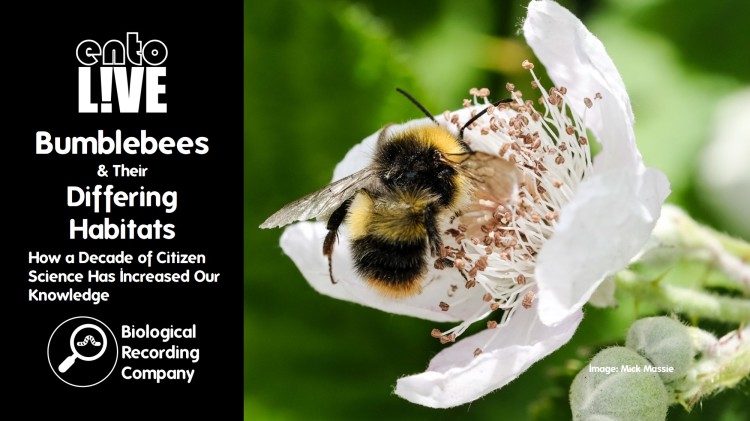Biological recording is the scientific study of the distribution of living organisms. Biological records describe the presence, abundance, associations and changes, both in time and space, of wildlife.
However, you don’t need to be a scientist to contribute to biological recording – indeed the vast majority of biological records come from volunteer recorders, naturalists and citizen scientists.
I worked with Buckinghamshire & Milton Keynes Environmental Records Centre to produce the Make Your Wildlife Observations Count webinar series that covered some of the do’s and don’ts of wildlife recording, with the aim of helping naturalists and recorders generate accurate and high-quality biodiversity data.
Webinar 1: How To Record
The first webinar covered the basics, including what information should be included in every biological record and how you can ensure that the data that you provide is both useful and accurate. By the end of the webinar, you will feel confident submitting species observations.
The 4 subjects covered in this webinar are:
- The Basics
- Record Resolution
- Data Quality
- Sharing Records
Webinar 2: How Not To Record
The second webinar delves deeper into biological recording and covers some of the common mistakes made by biological recorders and provides guidance on how to avoid these pitfalls. By the end of the webinar, you will feel confident that your biological records are high quality and include accurate data.
The 4 subjects covered in this webinar are:
- Understanding Grid References
- Site Names
- Recording on a Walk
- iNaturalist
FAQs
Where should I submit my data?
There are lots of places where biological records can be submitted and this can be a tricky question to answer – it really depends on why you are recording. If you are recording for a specific project (such as the RSPB Big Garden Birdwatch), you should submit the records through the prescribed submission method by the project.
However, for ad hoc recording you could submit data to a local natural history group, a National Recording Scheme/Society (NRSS) or the Local Environmental Record Centre (LERC) for the area where the species was observed. These organisations will all use the data for different purposes and may share the data with one another. For some species groups, a network of County Recorders exists that links these organisations together and acts as the point of record submission. Some LERCs and NRSSs download records from the iRecord online recording platform, whereas others require records to be submitted directly to them.
My personal advice is to submit the records into iRecord – you can always download them and share them with any NRSSs or LERCs that don’t use iRecord at a later date.

Can I submit records if I’m not a professional ecologist?
Absolutely!!! Most biological records are submitted by amateur naturalists and volunteer biological recorders. If you are confident with the species determination, please do submit your records. If you’re not confident with your determination you could try adding a photo to iSpot or a relevant Facebook groups (such as local natural history or species-specific groups) for feedback on your ID.
Alternatively, get in touch with the relevant National Recording Scheme/Society for further guidance on recording a specific taxonomic group.
How often should I record the same species in my garden?
This often depends on the type of recording that you are doing.
For ad hoc recording of common species in your garden or local greenspace, BMERC recommends that you submit an annual record of the species observed.
If you are undertaking a specific survey (such as botany transects or the weekly BTO Garden Birdwatch) you may be encouraged to record a species (and their abundance) on a more regular basis as they are using a set methodology and want your submission to be comparable with other records.
For some species groups, other factors may also come into play. For example, it’s always useful to record your first sighting of a butterfly species in a given year to help us understand how the flight periods of species are changing over time due to factors such as climate change. But don’t forget to note on the record that it is your first sighting of that species!
If you’re unsure, contact the relevant NRSS or LERC and ask them what they recommend.
Useful Links
Recording websites and guidance
- iRecord – Useful online recording platform for submitting records to National Recording Schemes/Societies and Local Environmental Record Centres (check with specific organisations to enquire if they use iRecord). Also has ‘Activities’ features for local groups and projects to manage recording initiatives.
- iRecord: An Introduction – Article about iRecord and how it works.
- Discovering iRecord – 4-week online course by the Field Studies Council that teaches learners about biological recording and using iRecord. The course includes self-study content, live webinars, quizzes and tutor-graded assignments (includes both field and digital homework).
- Get Involved (BMERC) – Webpage explaining how you can get involved with biological recording in Buckinghamshire and Milton Keynes. Includes info on online opportunities and a list of local natural history groups.
Grid reference websites
- Grid Reference Finder (UK) – Enables user to search by numerous methods, including grid reference, lat/long, postcode and place name. Grid reference displayed when pin dropped on the map. This website also has a lat/long bulk conversion tool.
- Cucaera – Overlays the map with OS grid squares (resolution changes as the map is zoomed in and out). The grid reference is displayed when a grid square is selected. Background maps can be toggled between satellite and OS maps.
- Grab A Grid Reference Duo (Bedfordshire Natural History Society) – This enables you to look at an OS map alongside a satellite image of the area.











